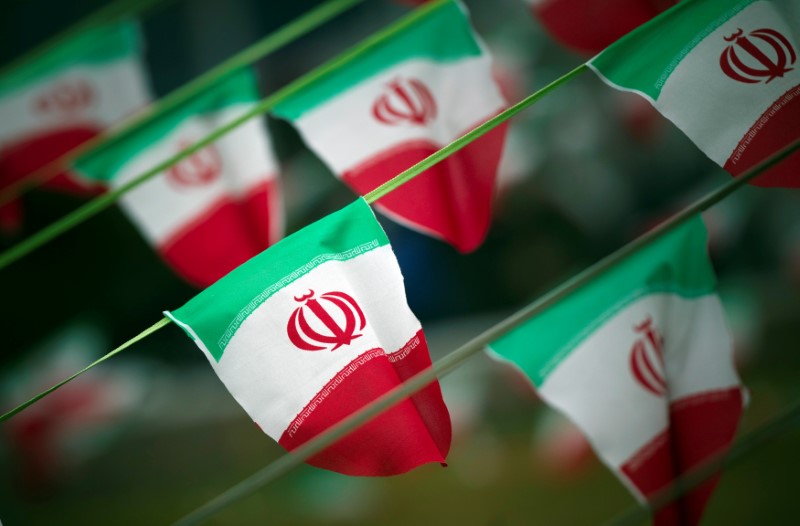(Bloomberg) -- Iran will formally notify signatories to the 2015 nuclear deal that it plans to scale down its commitments in response to a year of bruising U.S. sanctions, a move that could escalate tensions after the Trump administration sent an aircraft carrier to the Gulf.
Iranian President Hassan Rouhani won’t follow Donald Trump in abandoning the landmark agreement that saw the Islamic Republic limit its nuclear program in return for an end to most international sanctions, but is expected to unveil on Wednesday minor changes to its pledges.
State-run Iranian Students’ News Agency cited an unnamed official as saying that Foreign Minister Javad Zarif would include technical details of the plans in a letter to the EU’s foreign policy chief Federica Mogherini, and dispatch letters to the Tehran ambassadors of the remaining signatories. It cited an unnamed official and gave no details.
Known formally as the Joint Comprehensive Plan of Action (JCPOA), the nuclear accord was reached after years of painstaking multilateral negotiations led by the U.S. But Trump withdrew a year ago and has since reimposed sanctions that have squeezed Iran’s economy -- hitting its currency, fueling inflation and discouraging investment.
Any indication that Iran is backsliding or resuming nuclear activities would likely be interpreted as a breach of the agreement by senior Trump administration officials who have made confronting Iran and curbing its regional influence a cornerstone of U.S. foreign policy.
“The administration will try to make as much rhetorical hay as they can out of Iran exceeding any of the JCPOA limits -- while ignoring anyone who points out that it was the Trump administration that has trashed the JCPOA, and that Iran would still be adhering to the limits if the administration had not reneged on its own obligations,” said Paul Pillar, a former CIA officer who’s now a professor at Georgetown University.
How U.S. Can Force the World to Squeeze Iran’s Oil: QuickTake
The U.S. ratcheted up economic pressure early this month by letting waivers allowing eight governments to import Iranian oil expire, in its drive to cut Iran’s oil exports to zero and force the country to stop support for groups such as Yemen’s Houthis and Lebanon’s Hezbollah, considered by the U.S. and others a terrorist organization.
On Sunday, the U.S. said it was deploying the aircraft carrier strike group in an “unmistakable message” to Iran that it would meet any aggression with “unrelenting force.” And on Tuesday, it said B-52 bombers were also heading for the Middle East.
Iranian leaders are making the calculation that the U.S. isn’t looking for war but their move could undermine relations with Europe, said Sanam Vakil, senior research fellow at Chatham House’s Middle East and North Africa Program. “They are rolling the dice,” she said.
European signatories have continued to back the deal, pledging to find ways to ease the impact of punitive U.S. actions and ensure Iran benefits from its continuing compliance. Those efforts have so far proven inconclusive, however.
For months, Iranian officials have signaled that they’re losing patience with a deal that’s providing very few of the promised economic benefits. In its report on Monday, ISNA said its steps were justified by clauses in the deal that allow it to scale back its pledges if the U.S. imposes new sanctions and European signatories fail to meet their own commitments.
Representatives of the EU, the French, German and British governments and Iran met in Brussels on Tuesday to discuss how to implement Instex, a European mechanism designed to facilitate trade with Tehran. Iran’s planned announcement was not discussed as the meeting was technical.
U.S. Republican Senator Marco Rubio called the Iranian move a “bluff.”“It’s part of a campaign to pressure Europe into helping them evade U.S. sanctions. They may push limits of deal. But already struggling to gain access to foreign currency & fund budget they aren’t going to leave it,” he wrote on Twitter.
(Updates wth analyst in paragraph 6, Rubio in paragraph 13, bomber deployment paragraph 8.)
